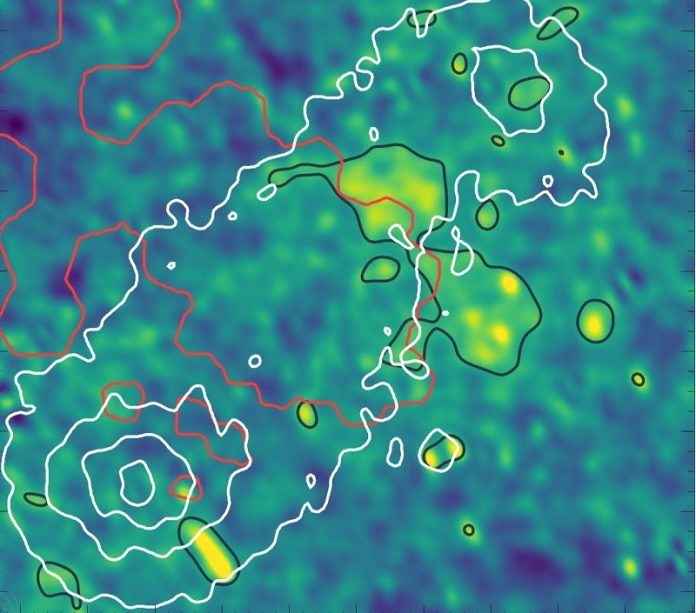
Have you ever tried to listen to your favorite song, but the noise from a loud truck passing by drowned it out?
Imagine being an astronomer, trying to listen to radio waves from distant galaxies, and a nearby cosmic ‘loud truck’ – a bright foreground object – is making it impossible for you to hear the soft, faint signals from those galaxies.
That’s the problem scientists have been facing with a galaxy cluster named CIZA1359.
But that’s where Kohei Kurahara and his team from the National Astronomical Observatory of Japan come in.
They’ve just managed to uncover the radio signals from this far-off galaxy cluster using an upgraded telescope called the Giant Metrewave Radio Telescope (or uGMRT for short).
It’s like they’ve built a super powerful ‘noise-cancelling headphone’ for the universe!
CIZA1359 isn’t just any galaxy cluster. It’s special because it’s one of the few places in the universe where scientists can see two smaller clusters of galaxies slowly coming together to form a larger one.
But, because CIZA1359 is located so close to a very bright cosmic object, the radio signals from this merging process have always been drowned out – until now.
The uGMRT has helped Kurahara’s team identify many radio sources within CIZA1359. These findings will guide future research using even more advanced radio telescopes like the upcoming Square Kilometer Array (SKA).
With these powerful tools, astronomers can delve deeper into the cosmos, exploring distant and faint objects and learning more about how galaxy clusters grow and evolve.
This exciting discovery and its details were published in a special issue of the Publications of the Astronomical Society of Japan in February 2023. The name of the paper is “Diffuse radio source candidate in CIZA J1358.9-4750.” The study is sure to spark more interest in our quest to understand the mysteries of the universe.
So, next time you put on your headphones to drown out the noise around you, remember – astronomers are doing something similar to explore the stars!
The study “Diffuse radio source candidate in CIZA J1358.9-4750” was published in the special issue of the Publications of the Astronomical Society of Japan.
Source: National Institutes of Natural Sciences.



